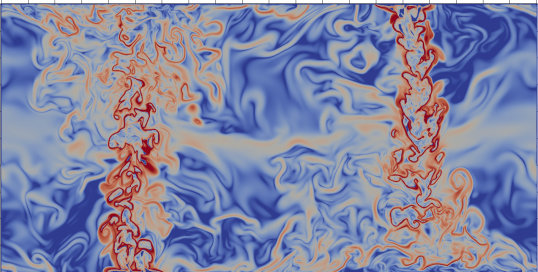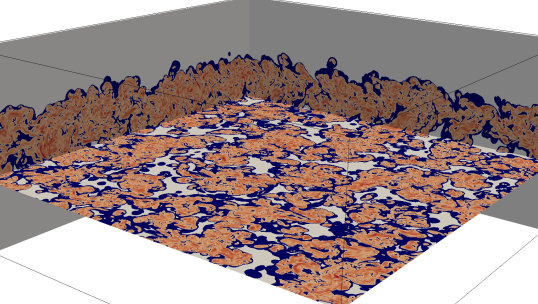Summary
My research involves the modelling and optimisation of flow physics for the built environment. Part of this work comprises fundamental studies of mixing in buoyancy-driven turbulence. Another part concerns the representation of open and closed systems using bulk models and network thermodynamics for the prediction and control of temperature and ventilation in buildings. In this regard, I am particularly interested in questions relating to system robustness, the composition and interaction of systems, data assimilation and optimal control.
My background is in fluid mechanics (at Imperial College London) and architecture (at the Bartlett, UCL). I am an associate member of the Institute of Mathematics and its Applications and a member of their London Branch committee.
Here is a summary of recent and current projects:
![[D*]stratify](http://www.imperial.ac.uk/ImageCropToolT4/imageTool/uploaded-images/logo-trim_1624271987367_x1.jpg?r=903)
We are using measurements from a computer laboratory alongside simulations and theory to develop models for thermally stratified environments as part of a new EPSRC-funded project: dstratify.org.
Decomposition of available potential energy
Available potential energy quantifies how much of a fluid's potential energy is available to be converted into useful work or kinetic energy. It is therefore relevant to any problem involving buoyancy-driven mixing such as oceanography, reservoir modelling and building ventilation. This work explains how available potential energy can be meaningfully decomposed into `inner' and `outer' parts. The `inner' part accounts for the available potential energy that is intrinsic to a given control volume (cf. the rooms in the animation above), while the `outer' part accounts for the context provided by a larger parent volume (such as an entire building).
The robustness of natural ventilation
Buildings that are naturally ventilated admit multiple steady states and changes in their external environment can produce transitions between such states. Graham Hughes and I have looked in detail at the `stability' properties of a single room, heated by an isolated point source, that is subjected to changes in an opposing wind. The animation below shows the system's phase space in terms of the height of a density interface and upper layer buoyancy. The inset figure shows the profile of the `smallest' change in the wind that is sufficient to permanently reverse the original forward displacement ventilation. For further details see JFM 199.
The energetics of confined turbulent plumes
With Megan Davies Wykes (University of Cambridge) I have been looking in detail at flow driven by isolated sources of heat in confined spaces (see arXiv). Here's an image from a direct numerical simulation that shows how much energy the flow expends in mixing regions of different density:

The video below combines the information above (blue) with the viscous dissipation of kinetic energy (red) to illustrate differences in their spatial distribution.
The statistical topology of enstrophy
With Jean-Paul Mollicone and Maarten van Reeuwijk, I have been looking into the statistical topology of enstrophy in temporal jets. This involves quantifying how isosurfaces of enstrophy are connected in space in an effort to discriminate different turbulent flows. Here's a picture showing isosurfaces corresponding to extrema of the Euler characteristic (e.g. maximising the number of `voids' in the enstropy field):

Publications
Journals
Wood S, Burridge H, Craske J, 2023, Relating quanta conservation and compartmental epidemiological models of airborne disease outbreaks in buildings, Scientific Reports, Vol:13, ISSN:2045-2322
Andrian V, Craske J, 2023, Stochastic models of ventilation driven by opposing wind and buoyancy, Proceedings of the Royal Society A: Mathematical, Physical and Engineering Sciences, ISSN:1364-5021
Arslan A, Fantuzzi G, Craske J, et al., 2023, Rigorous scaling laws for internally heated convection at infinite Prandtl number, Journal of Mathematical Physics, Vol:64, ISSN:0022-2488, Pages:1-24
Hossain MR, Craske J, van Reeuwijk M, 2022, Reconstructing wall shear stress from thermal wall imprints, International Journal of Heat and Fluid Flow, Vol:95, ISSN:0142-727X, Pages:108976-108976


